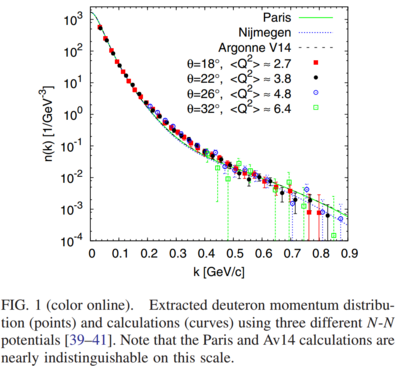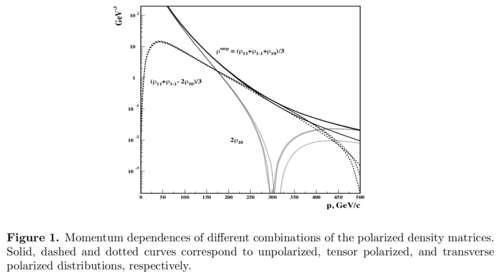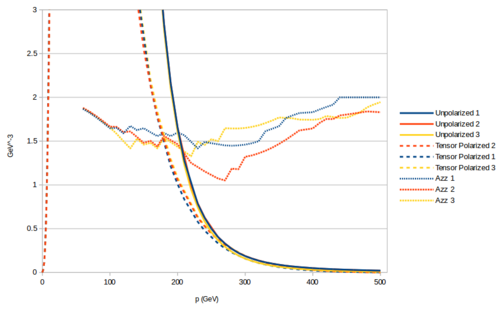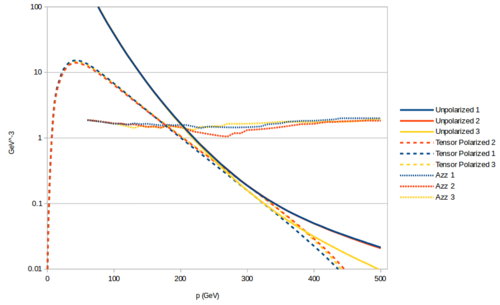Difference between revisions of "Elong-16-03-24"
| Line 1: | Line 1: | ||
| − | ==Wavefunction | + | ==Wavefunction Comparison Question== |
The major challenge issued by the PAC seems to be to more clearly show why Azz is a better observable than the unpolarized case for determining information on the deuteron wave function. In particular, I think it would be helpful to show how our measurement could compare to one similar to this plot from PRL 108, 092502 (2012): | The major challenge issued by the PAC seems to be to more clearly show why Azz is a better observable than the unpolarized case for determining information on the deuteron wave function. In particular, I think it would be helpful to show how our measurement could compare to one similar to this plot from PRL 108, 092502 (2012): | ||
| Line 9: | Line 9: | ||
[[Image:2016-03-24-misak-fig1.png|500px]] | [[Image:2016-03-24-misak-fig1.png|500px]] | ||
| − | and | + | and attempted to add a plot of Azz, where I just took the distributions of the unpolarized and tensor-polarized case for each WF and put them into Azz=2*(pol-unpol)/unpol: |
[[Image:2016-03-24-azz-test-lin.png|500px]] [[Image:2016-03-24-azz-test-log.png|500px]] | [[Image:2016-03-24-azz-test-lin.png|500px]] [[Image:2016-03-24-azz-test-log.png|500px]] | ||
| + | |||
| + | However, I'm unsure of the validity of this method, and also how it would change between Pzz=+1 and Pzz=-2, since that should change the result but at the moment I don't know how to incorporate it into this plot. | ||
Latest revision as of 08:23, 24 March 2016
Wavefunction Comparison Question
The major challenge issued by the PAC seems to be to more clearly show why Azz is a better observable than the unpolarized case for determining information on the deuteron wave function. In particular, I think it would be helpful to show how our measurement could compare to one similar to this plot from PRL 108, 092502 (2012):
To attempt a comparison, I took the wavefunctions as listed in Misak's proceedings from the tensor workshop:
and attempted to add a plot of Azz, where I just took the distributions of the unpolarized and tensor-polarized case for each WF and put them into Azz=2*(pol-unpol)/unpol:
However, I'm unsure of the validity of this method, and also how it would change between Pzz=+1 and Pzz=-2, since that should change the result but at the moment I don't know how to incorporate it into this plot.



